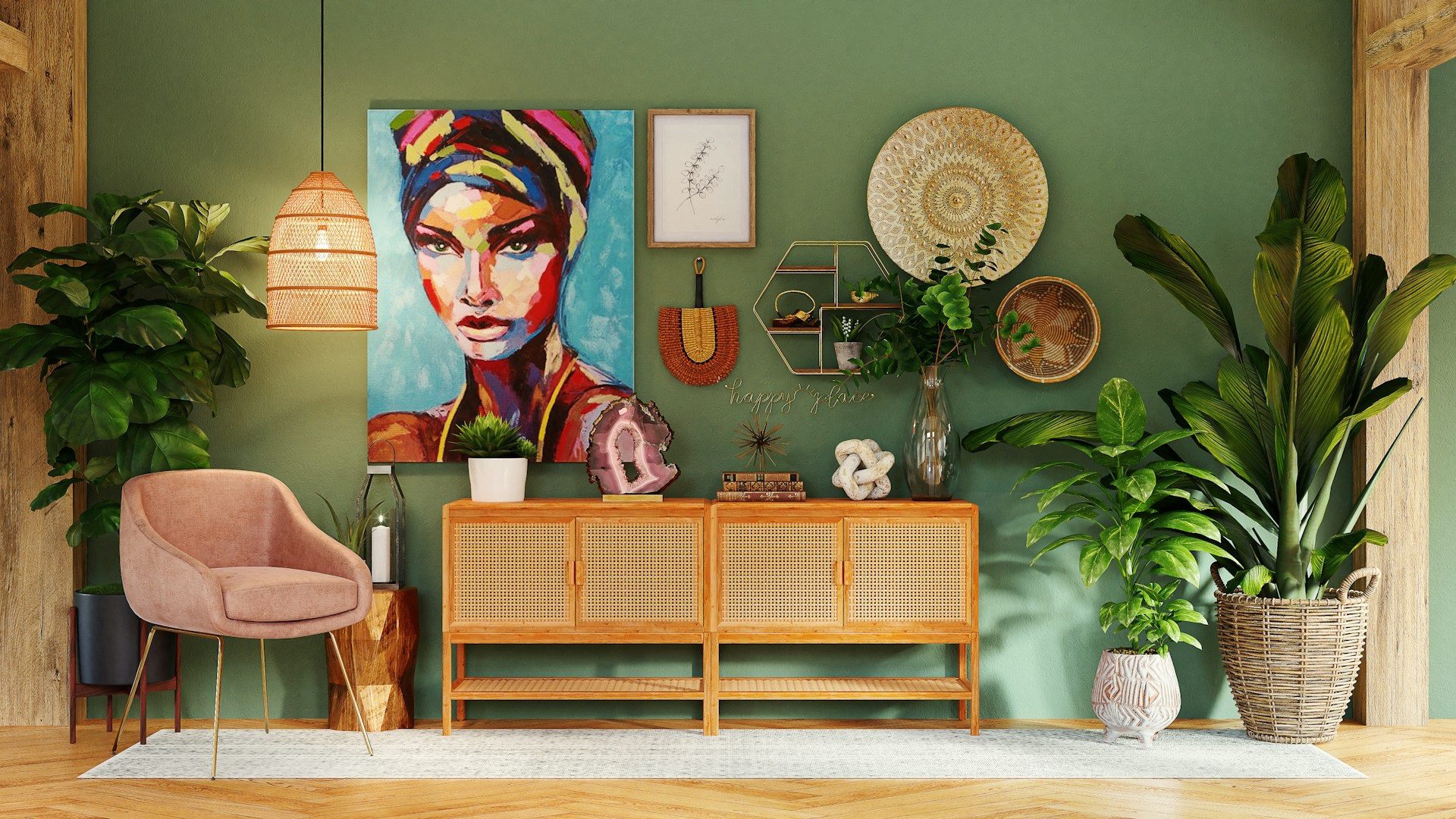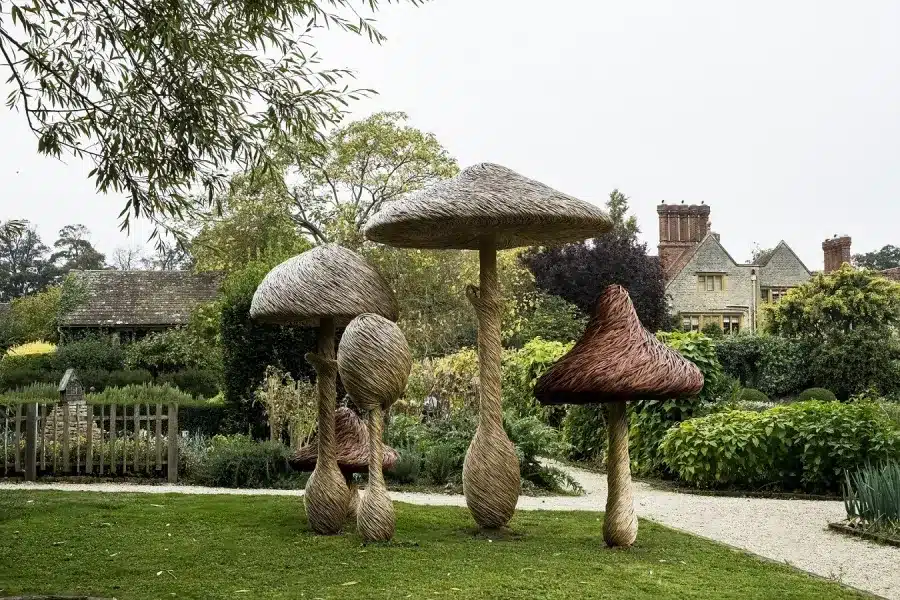
Blog
Mushrooms: From a food ingredient to a creative element in home decor and construction

Mushrooms are all the rage in the world of home decor, with lamps, chairs, baskets, and decorations that take the form of mushrooms. The mushroom is both magical and mysterious, as it can be used to create delicious dishes or deadly poison. But what is it about mushrooms that makes them so popular in the world of décor?
جدول المحتويات
Attraction to Mushroom Shapes

Side of a living room, noting the mushroom-shaped pouf
The attraction to mushroom-shaped furniture, decorative home accessories, and lighting began in the 1970s; from handmade macrame canisters, placemats, and wall curtains to modern furnishings. Nowadays, with all the aesthetics that mean to Generation Z in terms of decoration, from grandma’s rustic house to exotic style, mushrooms are present.
Right now, as in the 1970s, people are living in a state of uncertainty about the future. The same goes for mushrooms: Are they safe to eat, or are they poisonous? This uncertainty explains the presence of mushrooms in homes.

Distinctive décor
From bottle holders, candles, and curtains, to cabinets with shelves, to lamps, sculptures, antiques, baskets, aromatic candles, napkins, napkins, plates, poufs, pillows, paper decorations for home decoration during events, wallpaper, and hooks, the ways in which mushrooms are used in home decor are endless, especially if the latter is characterized by earthy colors and the presence of woods.

Tabletop accessories (image from unsplash)
Mushroom lamps

Antique Mushroom Lamp
When this social media trend started to take off, gold/copper, glass, ceramic, and bamboo mushroom lamps were all the rage.
Vases
Mushroom-shaped vases, filled with greenery or wildflowers, add appeal to any interior space.
Hooks
There are many cute examples of hooks/mushrooms. In this case, the copper ones look special when they are placed on the wall.
Baskets
Mushroom-shaped baskets are great for children’s bedrooms or playrooms.
Side tables
Mushroom-shaped side tables are a great addition to the living room, with a creative twist!
Mushroom patterns
The possibilities for mushroom patterns on towels, fabrics, tablecloths, wallpaper… are endless. They would look great in the kitchen. Some of the patterns are reminiscent of vintage style.
Pillows
If your child’s room is laden with woodland elements, mushroom pillows are a perfect fit, as well as providing a super cozy texture!
Fungi as building materials
Mycelium is the invisible part of the fungus; the “roots” which are made up of tiny filaments called mycelium. They used to be used as packaging materials, and as inspirational materials for art objects and clothing. Nowadays, fungi are making good progress in the building materials sector. Slabs or molds of mycelium can be grown in a confined space by filling them with agricultural waste such as straw or hay soaked with mushroom spores. It only takes five days for the organic matter from the fungus to turn into molds, in a cheap and efficient process. There’s no need for heat or energy-consuming ingredients, such as Cement – just discarded materials at room temperature
While fungus bricks are not as strong as traditional bricks, they are much lighter in weight. While bricks have a compressive strength of at least 28 megapascals, mushroom bricks can only withstand 0.2 megapascals. But they are 60 times lighter than conventional bricks. So, we can still stack mushroom bricks 40 feet high. But it clearly makes sense to use mycelium as a building material in non-load-bearing structures, such as: insulation and in interior walls.
Mushroom materials are durable, naturally fire-resistant, and can be easily molded into any shape. Moreover, they are environmentally friendly. Mushrooms as building materials provide excellent opportunities to recycle agricultural waste into a low-cost, sustainable, and biodegradable alternative material.
